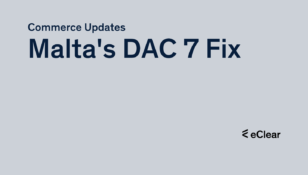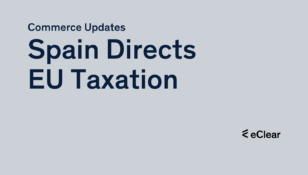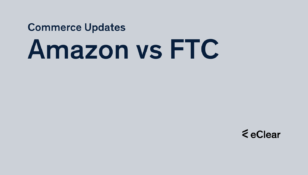This guide aims to demystify the e-invoicing process, providing a clear roadmap for implementation grounded in compliance, efficiency, and strategic foresight. Whether you are a seasoned e-commerce professional or a newcomer to the digital marketplace, this guide will equip you with the knowledge and insights needed to implement e-invoicing in your business successfully.
1. Understand the Basics of E-Invoicing
At its core, e-invoicing, or electronic invoicing, is a system that allows for the exchange of invoices between businesses in a digital format, thereby bidding farewell to the cumbersome paper-based processes of yesteryears. This digital transformation paves the way for significant cost savings and enhances efficiency, making it an attractive proposition for businesses.
E-invoicing has been further streamlined in the European Union by introducing the European Norm (EN) for e-invoicing. This standard ensures uniformity in e-invoicing across all member states. As we delve deeper into the digital age, understanding the basics of e-invoicing becomes a necessity and a strategic move for businesses seeking to stay ahead in the competitive e-commerce landscape.
2. Compliance with EU Regulations
Compliance is key in the labyrinth of EU regulations, particularly regarding e-invoicing. The European Union has meticulously crafted a set of specific regulations that govern the use of e-invoicing, with a particular emphasis on transactions involving public entities.
The Directive 2014/55/EU, a piece of legislation that is as pivotal as it is prescriptive, mandates e-invoicing in all public procurement processes. This directive is not merely a suggestion but a binding requirement that all businesses must adhere to. Therefore, when selecting an e-invoicing solution, ensuring it aligns with these regulations is paramount.
3. Training and Support
In e-invoicing, the human element remains as vital as the technological one. Equipping your team with the necessary skills to navigate the e-invoicing system is paramount. This is not merely about understanding the system’s functionalities but mastering its use to optimise your business operations.
Concurrently, the role of your e-invoicing solution provider extends beyond the provision of software. They should be a reliable partner, offering comprehensive support to address and resolve any issues that may surface swiftly.
4. Creating and Sending E-Invoices
With the implementation of your e-invoicing system, you now stand at the threshold of a new era in your business operations. The creation and dispatch of e-invoices, once a daunting prospect, is now within your grasp.
However, it is crucial to remember that each e-invoice is not merely a digital document but a testament to your compliance with EU regulations. As such, each invoice should be meticulously crafted to include all the necessary information. This includes your VAT number, the date of issue, a unique sequence number, the customer’s VAT number, a detailed description of the goods or services provided, and the VAT amount payable.
5. Receiving and Processing E-Invoices
The e-invoicing journey does not end with sending invoices; it also encompasses receiving and processing e-invoices from your suppliers.
Your e-invoicing system should be adept at handling this inbound flow of invoices, transforming what was once a manual and time-consuming process into a streamlined, automated operation. This capability is not merely a feature but a necessity, as it directly impacts your accounts payable process. By efficiently managing the receipt and processing of e-invoices, your business can ensure timely payments, maintain good supplier relationships, and ultimately enhance its financial health.
6. Archiving E-Invoices
The spectre of EU regulations looms large, necessitating businesses to archive invoices for a specified duration. This is not a mere administrative task but a regulatory mandate with significant legal implications. As such, your e-invoicing solution should help create and process invoices and provide a secure and compliant method for their archival.
This ensures that your business remains on the right side of the law while providing easy access to historical financial data.
7. Monitoring and Reporting
Your e-invoicing system, beyond its primary function, serves as a rich repository of data that can be harnessed to glean valuable insights into your business operations.
The reporting features of your e-invoicing system are not just tools but strategic assets that enable you to monitor your invoicing activity in real-time. By analysing these reports, you can gain a more profound understanding of your financial operations, identify trends, and spot potential areas for improvement. This is about keeping track of numbers and using data to drive strategic decision-making and foster continuous improvement.
8. Continuous Improvement
The implementation of e-invoicing is not a finite project but rather an ongoing journey of adaptation and improvement. This journey is not solely dictated by the needs of your business but also by the rapid advancements in e-invoicing technology and the ever-changing regulatory environment.
Staying abreast of these developments is not just about maintaining compliance or leveraging new features but also continuously refining your e-invoicing processes to maximise efficiency and effectiveness.
This commitment to continuous improvement is not merely a business strategy but a mindset that ensures your business remains agile and responsive in the dynamic world of EU e-commerce.
EU E-Invoicing Authorities and Documents

European Commission (EC): The EC plays a crucial role in setting the regulatory framework for e-invoicing across the EU. It has established the European Norm (EN) for e-invoicing and Directive 2014/55/EU, which mandates using e-invoicing in public procurement.
Connecting Europe Facility (CEF): The CEF is an EU initiative that promotes growth, jobs, and competitiveness through targeted infrastructure investment in various sectors, including digital services. It provides the E-Invoicing Building Block, which offers services that help public and private entities comply with the European standard on e-invoicing.
CEF Digital: This portal is managed by the Innovation and Networks Executive Agency (INEA) on behalf of the European Commission. It provides access to the Building Blocks, reusable software, specifications, and services that can help implement digital solutions, including e-invoicing.
European Committee for Standardization (CEN): CEN developed the European Norm (EN) for e-invoicing and continues to work on standards that facilitate e-invoicing.
While these authorities provide the regulatory and standardisation framework for e-invoicing in the EU, private service providers often implement e-invoicing solutions. These providers should ensure their solutions comply with the regulations and standards set out by these authorities.
Directive 2014/55/EU: Directive 2014/55/EU, enacted on 16 April 2014, addresses electronic invoicing in EU public procurement. It aims to standardise e-invoicing across EU countries, facilitating cross-border transactions for public contracts. The directive emphasises the development of a common European standard for e-invoices, ensuring interoperability between different national systems. It applies to most public procurement contracts but excludes those in the defence and security fields under Directive 2009/81/EC. The standard requires machine-readable invoices for automatic processing, promoting efficiency and reducing administrative burdens.
European Standard on Electronic Invoicing (EN 16931): This standard defines the semantic data model of the core elements of an electronic invoice.
Commission Implementing Regulation (EU) 2020/194: This regulation establishes technical specifications for a reference to a syntax or a reference to a version or release of syntax in an electronic invoice.
Directive 2006/112/EC: This directive details the common value-added tax (VAT) system, including invoicing rules.
These documents are subject to change, and checking for the latest versions is essential.
The European Commission has compiled E-Invoicing Country Factsheets for all 27 EU Member States and four additional European Economic Area countries to provide a comprehensive overview of each country’s approach. These factsheets, which are regularly updated, cover each country’s policy framework, E-Invoicing platform, and approach to processing electronic invoices. However, the verification status of these factsheets varies. For more information, please refer to the E-Invoicing Country Factsheets.







